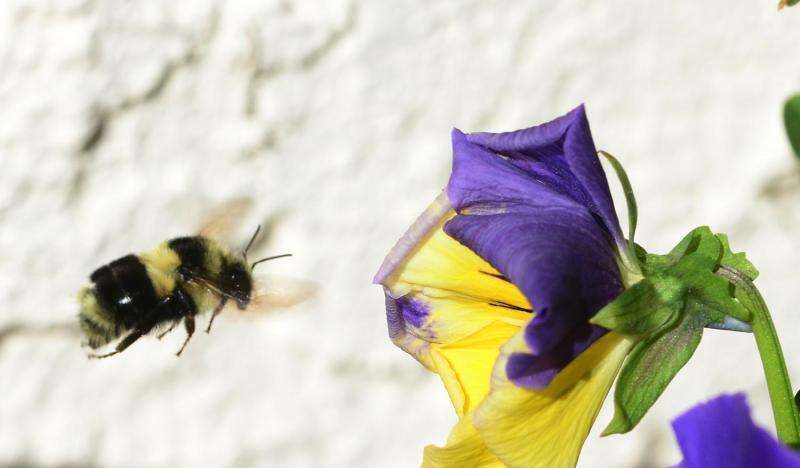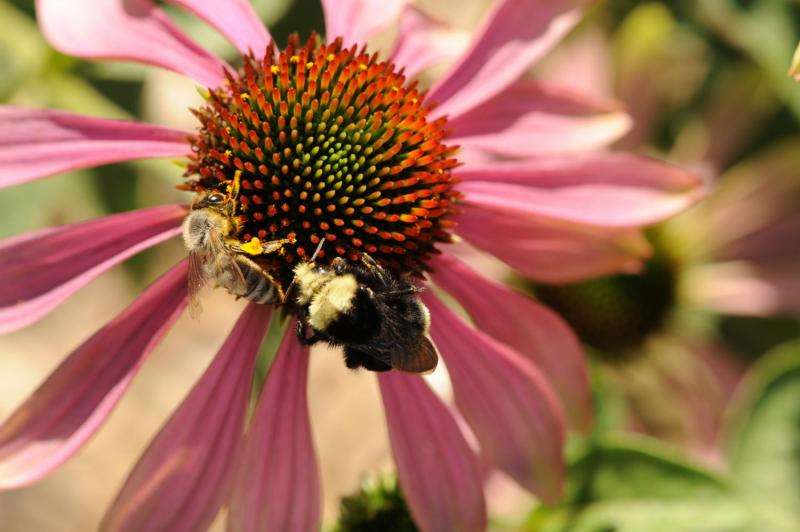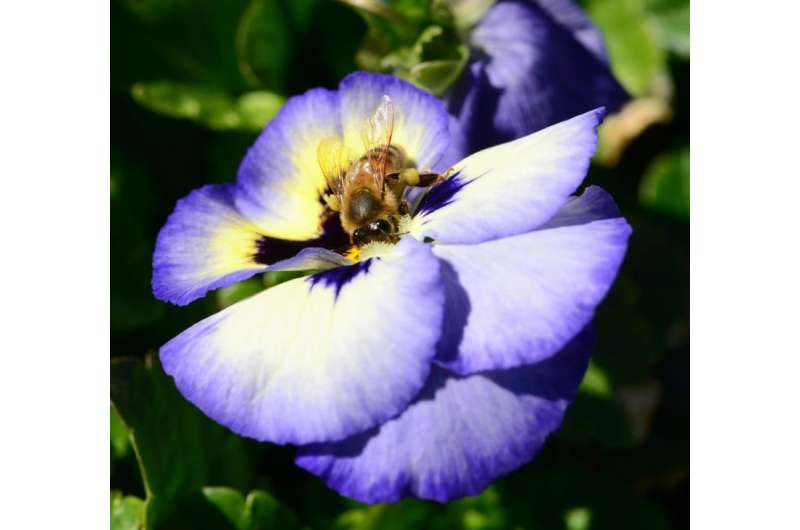Flowers can endanger bees: Study shows flowers serve as parasite-dispersing hubs

Despite their beauty, flowers can pose a grave danger to bees by providing a platform of parasites to visiting bees, a team of researchers has determined.
"Flowers are hotspots for parasite spread between and within pollinator populations," said Peter Graystock, a postdoctoral researcher in the Department of Entomology at the University of California, Riverside and a member of the research team. "Both the flower and bee species play a role in how likely parasite dispersal will occur."
The study, published online in the Proceedings of the Royal Society B, is the first to show that not only can bees disperse parasites around the environment but also that flowers are platforms for a host of pollinator parasites subsequently dispersed onto visiting bees.
"By showing that visits from parasite-carrying bees can turn flowers into parasite platforms, we can say that it is likely that heavily visited flowers may become more 'dirty' with bee parasites," said Graystock, the research paper's first author. "Planting more flowers would provide bees with more options, and parasite spread may thus be reduced."
The researchers found four common honey bee and bumblebee parasites to be dispersed via flowers: Nosema apis (causes a honey bee disease), Nosema ceranae (causes an emergent disease in honey bees and bumblebees), Crithidia bombi (causes a bumblebee disease) and Apicystis bombi (mostly found in bumblebees). These parasites are known to cause, lethargy, dysentery, colony collapse, and queen death in heavily infected bees.
Currently, bees are frequently transported across state and international territories. Quarantine and parasite screening usually cover only the screening of host-specific diseases. But bumblebees can transport honey bee parasites, and vice versa, the research team has now shown, and proposes that increased screening protocols be employed to protect pollinator diversity.

"With some 20,000 bee species, it is a surprise that only recently has research in pollinator health considered the interactions between bee species," Graystock said. "Our finding may also affect the national and international trade of flowers unless sterilization of parasites on these flowers can be guaranteed. Otherwise flower movements may also be moving pollinator parasites to new territories."
He explained that commercially imported bumblebees have been found to contain a cocktail of parasites that are harmful to both bumblebees and honeybees.
"We know these commercially imported bumblebees, when given the opportunity, will forage on the same flowers as wild bees and honeybees," he said.

In their experiments, Graystock and his colleagues allowed one species of bee (honey bees or bumblebees) from hives containing parasites to forage on flowers for three hours. The bees were then removed and a second group of flowers were added to the foraging arena along with colonies of a second bee species (a species not used before). The new bees then foraged upon both the new and previously foraged flowers for three hours. All flowers were then sampled to see if parasites had dispersed onto them. Parasites found in the original patch confirmed parasite dispersal by the original hosts. Parasites found in the new group of flowers confirmed the non-target bee was able to disperse the parasites.
Next, Graystock, who works in the lab of Quinn McFrederick, an assistant professor of entomology, is looking at how flowers may also be hubs for transmitting not just parasites but also potentially beneficial microbes. He is looking, too, at the role different flowers play on bee survival and development.
More information: Parasites in bloom: flowers aid dispersal and transmission of pollinator parasites within and between bee species, rspb.royalsocietypublishing.or … .1098/rspb.2015.1371
Journal information: Proceedings of the Royal Society B
Provided by University of California - Riverside


















